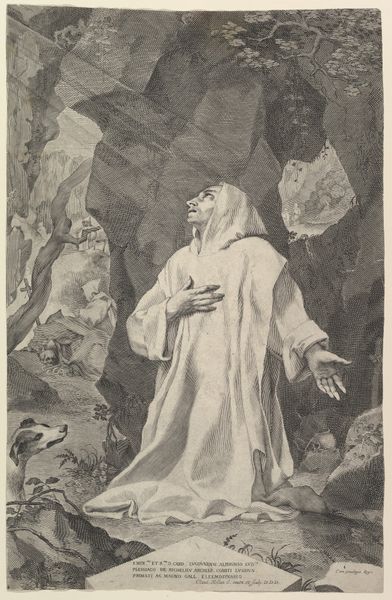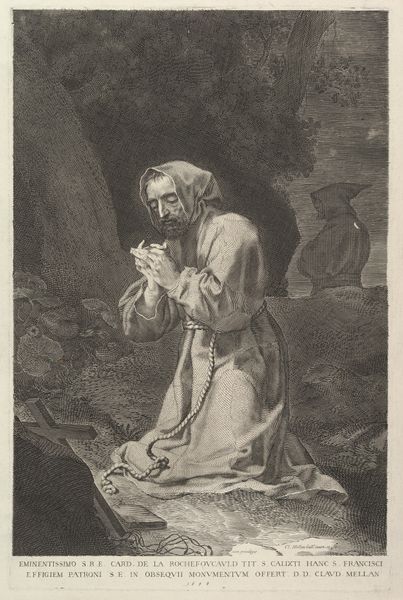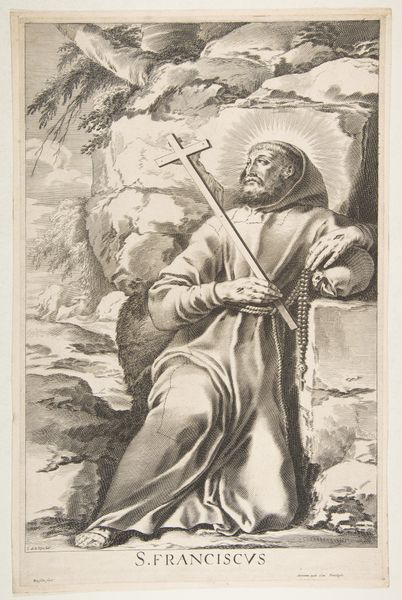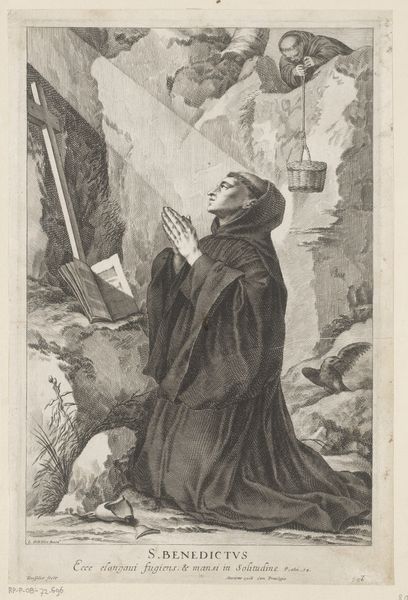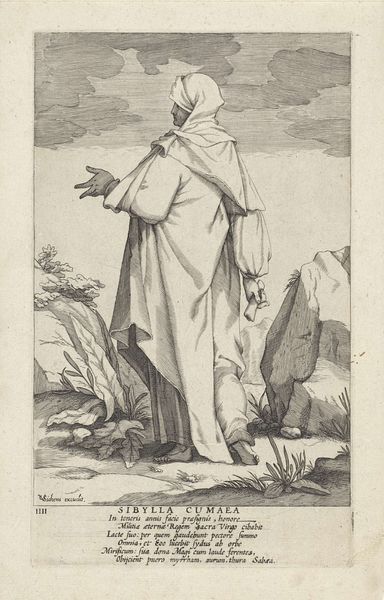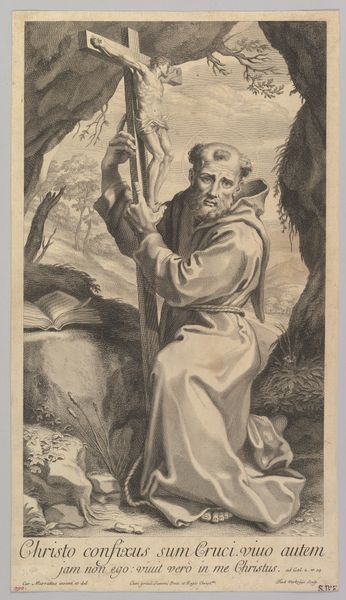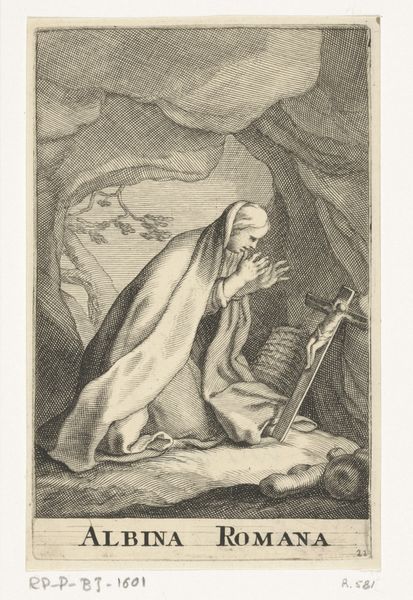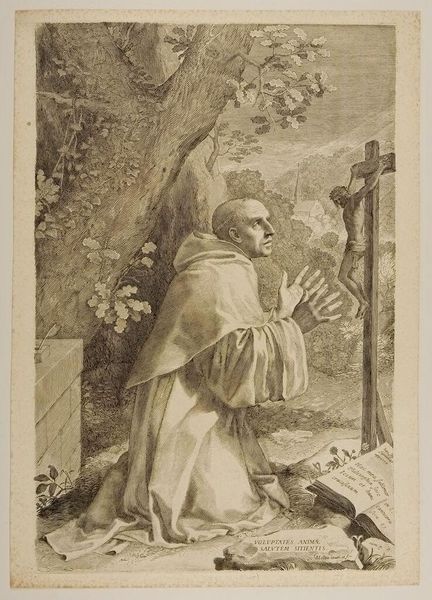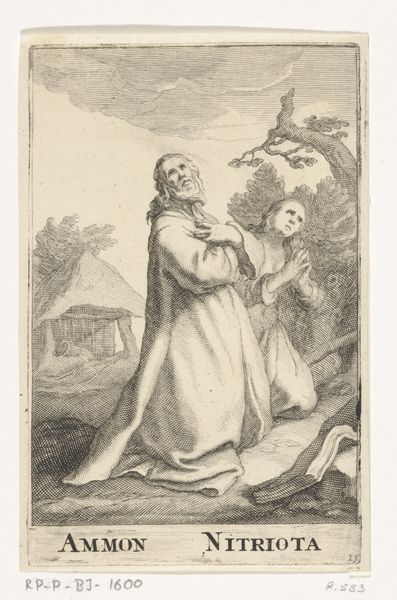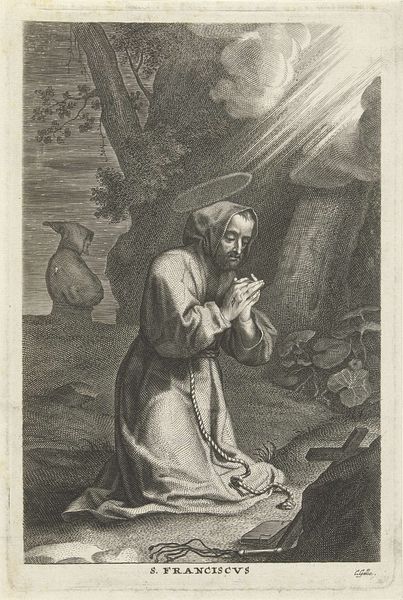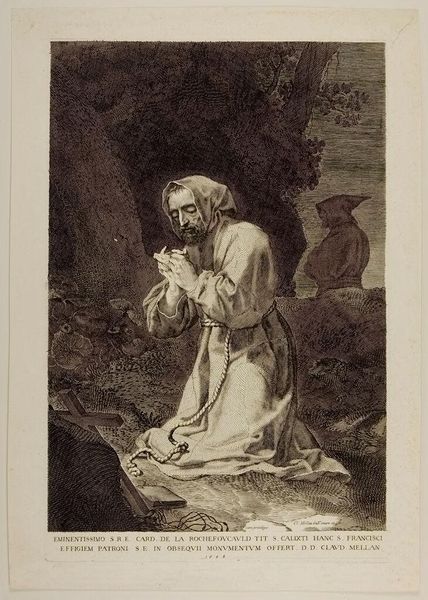
engraving
#
portrait
#
baroque
#
history-painting
#
engraving
Dimensions: height 371 mm, width 244 mm
Copyright: Rijks Museum: Open Domain
Editor: This is "Saint Bruno Kneeling Before a Cross," an engraving by Gilles Rousselet, made in the 1650s and housed here at the Rijksmuseum. The stark contrast of light and shadow creates such a dramatic mood, almost theatrical. How do you read the composition of this piece? Curator: Note how Rousselet's formal arrangement, particularly his strategic use of chiaroscuro, does much to define our understanding of the subject. The sharp contrasts, virtually voiding mid-tones, direct the viewer's eye immediately to Saint Bruno. The texture is palpable; observe how the weave of the Carthusian robe falls about the saint’s form, contrasting subtly with the coarse texture of the rocky enclave. Editor: Yes, it is a compelling and unsettling approach. But are these merely formal observations, or can we infer a deeper meaning from them? Curator: I would ask you to consider what exactly the formal arrangement impresses upon you. The formal aspects serve as a mirror to Bruno’s internal state, perhaps a depiction of monastic isolation from exterior corruptions? Editor: So, it's not just about the dark and light, but what those elements convey about Bruno's spiritual state through the medium of line and tone? Curator: Precisely. And note that there are no casual strokes in this work, but considered intention in mark making, each element contributes to an overall semiotic engagement, reflecting the core artistic philosophy of the Baroque. How do the formal elements guide us? Editor: This formal examination definitely enriches my perception; seeing it as more than just a portrait, but as a designed visual text to interpret! Curator: Indeed, through critical interpretation, these elements invite contemplation and allow for deeper artistic engagement, offering insight into artistic movements and periods, from initial inception through sustained reflection.
Comments
No comments
Be the first to comment and join the conversation on the ultimate creative platform.
